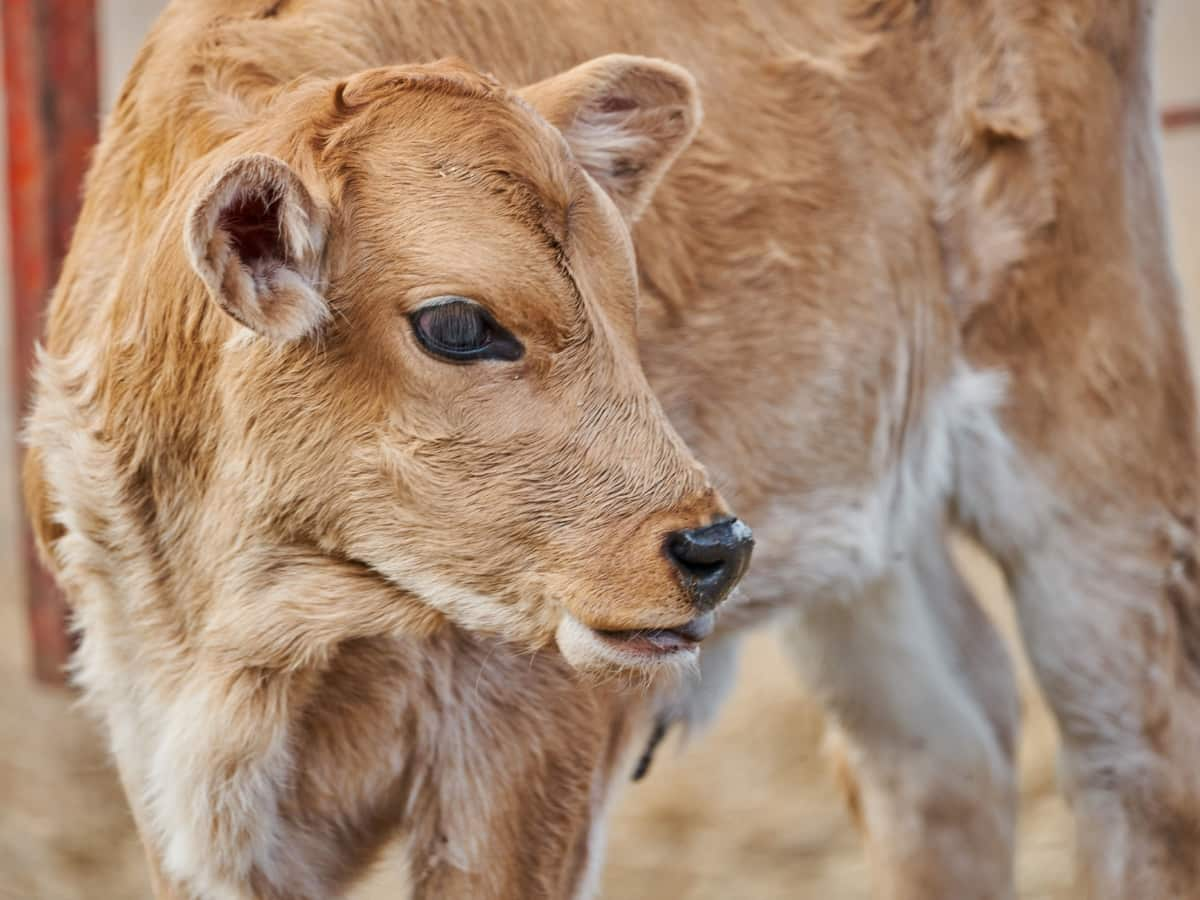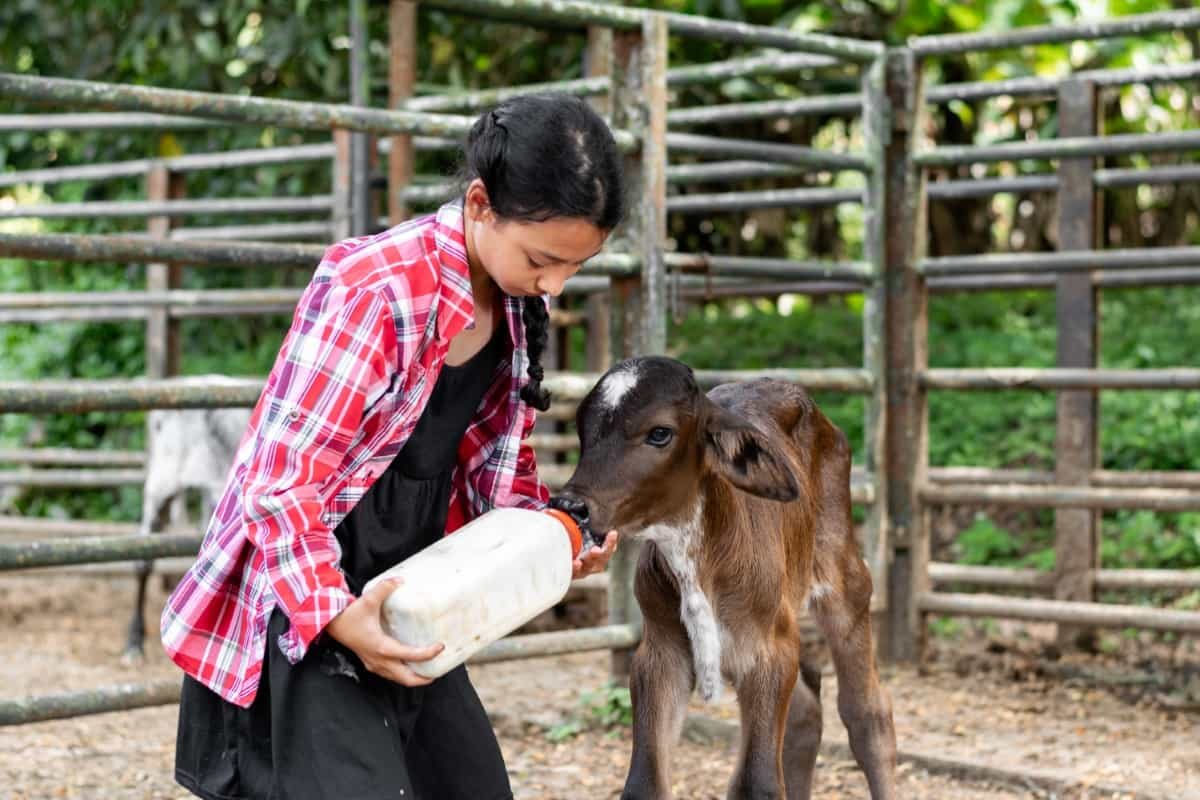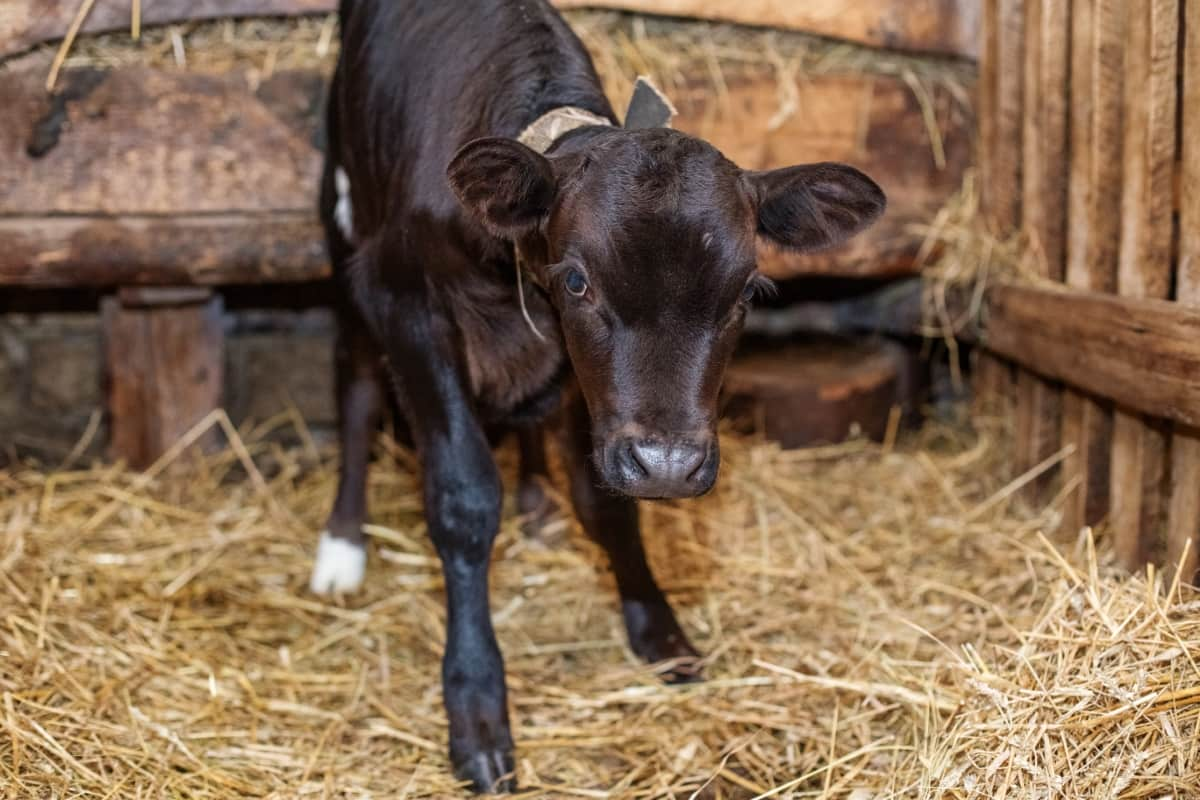Hello Cattle farmers, A calf that has lost its mother is an orphan calf. An orphan calf is a young animal that has lost its mother or has been abandoned. This can happen for several reasons, such as illness, injury, or even human intervention. Orphan calves are vulnerable and require special care to ensure their health and well-being.

Raising an Orphan Calf
Overview of Raising an Orphan Calf
Understanding Orphan calf needs is crucial for their well-being. Orphan calves require immediate care and attention to thrive in their new environment. Without a mother’s milk, orphan calves need alternative sources of nutrition to thrive. Raising an orphan calf involves providing round-the-clock care to mimic the nurturing environment they would have received from their mother. Colostrum management plays a critical role in calf health, providing essential antibodies and nutrients for a strong immune system.
When it comes to raising an orphan calf, immediate care is crucial. The first few hours and days of a calf’s life are vital for their health and development. Prompt attention can make a difference in their overall well-being. Providing the orphan calf with proper colostrum intake right after birth is essential. By addressing their needs promptly, you set them up for a healthier future ahead.
Colostrum Management
Colostrum management plays a crucial role in the health of orphan calves. Colostrum is mainly used for the first milk produced by cows after giving birth, packed with essential nutrients and antibodies necessary for the calf’s immune system development. Providing colostrum to an orphan calf is vital within the first few hours of birth to ensure they receive these crucial components. Without adequate colostrum intake, calves are more susceptible to diseases and infections.
When it comes to orphan calves, providing colostrum is crucial for their health and development. Colostrum is the first milk produced by the cow after giving birth, packed with essential nutrients and antibodies that help boost the calf’s immune system. To ensure an orphan calf receives adequate colostrum, it is important to collect colostrum from a healthy cow within the first few hours after calving. This ensures that the calf gets a high-quality source of nutrition and immunity.
Feeding and Nutrition
Feeding and nutrition are important in the development of orphan calves. Bottle feeding or tube feeding are common methods used to administer colostrum to orphan calves. It’s essential to monitor intake closely and adjust feeding amounts as needed based on the calf’s size and appetite. When it comes to milk replacers, choose high-quality products specifically designed for young calves.
Selecting a high-quality milk replacer that closely mimics the nutritional content of cow’s milk is essential. Look for options that provide the necessary protein, fat, vitamins, and minerals to support healthy calf growth. Consider factors such as the calf’s age, weight, and overall health when deciding on the best milk replacer formula. Introducing solid foods gradually is key in transitioning an orphan calf from a liquid diet to solid feed.
In case you missed it: The Ultimate Guide to Calf Buyback Programs: Maximize Your Herd’s Potential

Housing and Comfort
The housing for your calf should protect it from the elements and predators while also allowing ample space for movement. Bedding materials such as straws or shavings can offer comfort and help maintain cleanliness. Regularly cleaning the calf’s living quarters will help reduce stress on their immune system.
Ensuring the right temperature for your orphan calf is crucial for their well-being. During colder months, consider using heat lamps or blankets to keep them warm. Avoid drafts and make sure the bedding is dry and clean to prevent illness. In hot weather, provide shade and good ventilation in the calf’s living space. This will help the calf stay cool and avoid heat stress. Choose bedding materials that are soft, absorbent, and easy to clean. Straw or wood shavings are popular choices that provide comfort while maintaining hygiene.
Health Monitoring and Vaccinations
Regular health check-ups and vaccinations are crucial for ensuring the well-being of orphan calves. Common health issues in orphan calves include respiratory infections, scours (diarrhea), and joint/navel illness. It’s essential to be vigilant of these conditions to prevent them from escalating. Vaccinations play a significant role in protecting orphan calves from diseases such as pneumonia, clostridial infections, and others prevalent in the environment they are raised.
Vaccinations play an important role in protecting these vulnerable animals from various diseases that can impact their growth and overall well-being. Contact with a veterinarian to find the appropriate vaccines for orphan calves is essential. The vaccination schedule must be tailored to the specific needs and risks faced by each calf based on factors like location, herd health history, and individual health status.
Socialization and Behavioral Development
Socialization is crucial for orphan calves as it helps them develop important social skills. It allows them to interact with other calves and learn how to communicate effectively. Socialized calves are more likely to thrive in a herd environment and have better overall well-being. Encouraging healthy social behavior in orphan calves involves providing them with interaction with other animals in a safe and controlled manner.
One effective technique is to introduce them to other gentle cattle in a controlled environment. Allowing orphan calves to spend time together can also foster positive relationships among them. Creating a calm and stress-free environment promotes relaxation, reducing any fear or anxiety they may have. Providing consistent care, routine feeding times, and attention contributes to their emotional well-being.
In case you missed it: Ultimate Guide to Raising Oreo Cows: Belted Galloways Farming Facts, Profile, Uses, and Care

Weaning Process
Weaning an orphan calf is a crucial step in their development and growth. One of the signs that indicate they are ready for this transition is when they start showing interest in solid foods, like hay or grain. Another indicator to look out for is if the calf has established independence from its bottle or milk replacer. When they no longer rely solely on liquid nutrition and begin to consume more solids, it shows their readiness to move on from nursing.
Transitioning an orphan calf to solid foods is a crucial step in their development. It’s important to introduce solid food gradually to allow the calf’s digestive system to adjust. Start by offering small amounts of high-quality hay or pasture alongside their regular milk replacer. Monitor the calf’s response to solid foods closely, adjusting the feeding schedule as needed.
Handling and Training
Gentle handling is key in building trust with your calf – approach them calmly and avoid sudden movements that may startle them. Remember, they are still learning about their new environment. Teach your calf basic commands like leading and standing still using a calm voice and gentle guidance. Consistent training sessions will help build a routine for your calf, making it easier for them to adapt to handling over time.
Training orphan calves can be a rewarding experience for both the caregiver and the calf. When handling them, it’s important to approach them calmly and confidently to build trust. Consistency is key in training; establish clear routines for feeding, grooming, and handling. Regular interaction helps socialize orphan calves, making them more comfortable around humans and other animals.
Preventing and Treating Common Illnesses
Understanding common calf illnesses is crucial in ensuring their well-being. Keep a close eye on your calf for any signs of illness, such as diarrhea, coughing, or lethargy. Diarrhea can quickly dehydrate a young calf, so it’s important to address it promptly by consulting with a veterinarian and adjusting their diet if necessary. Respiratory issues like coughing may indicate a respiratory infection that requires veterinary attention. By staying informed about common calf illnesses and recognizing symptoms early on, you can provide timely treatment and prevent unnecessary suffering for your orphan calf.
The key preventive measure is ensuring a clean environment for the calf to reduce the risk of infections. Regular cleaning of pens and equipment can help prevent illnesses. Managing the health of orphan calves is crucial for their well-being and development. Another important strategy is implementing a vaccination schedule recommended by your veterinarian.
In case you missed it: Zebu Cow Breed: Origin, Characteristics, Price, Life Span, Appearance, and Temperament

Conclusion
Raising an orphan calf is a task that comes with immense importance and responsibility. These vulnerable young animals require dedicated care to thrive and grow into healthy adults. By taking on the role of caring for an orphan calf, you are not only providing them with essential nourishment and shelter but also offering them a chance at life.
- Feed Your Flock for Less: Top 10 Tips to Save on Chicken Feed
- Ultimate Guide to Ossabaw Island Hog: Breeding, Raising, Diet, and Care
- Hatching Answers: The Top 10 Reasons Your Chickens Aren’t Laying Eggs
- Eggs and Economics: Breaking Down the Cost of Raising Backyard Chickens
- Defend Your Greens: Proven Methods to Keep Iguanas Out of Your Garden
- Ultimate Guide to Cinnamon Queen Chicken: A Comprehensive Guide for Beginners
- Ultimate Guide to California Tan Chicken: Breeding, Raising, Diet, Egg-Production and Care
- Ultimate Guide to Marsh Daisy Chicken: Breeding, Raising, Diet, and Care
- 10 Types of Chicken Farming Businesses You Can Start for Profits